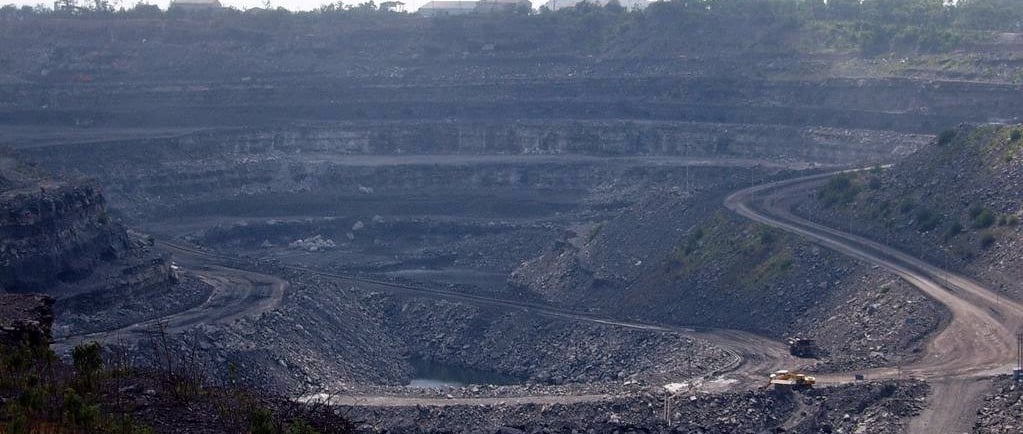COAL AND THE ENVIRONMENT


Coal is sometimes called "the Buried Sunshine" or "Black Diamond". It is one of the major sources of energy. Undoubtedly, coal produces massive energy, it provides 40% of the world’s electricity but it produces 39% of global Carbon Dioxide emissions. It is directly associated with a considerable increase in Global Warming. It contributes largely towards environmental degeneration despite its usefulness. Damage to humans, flora, and fauna are some of the negative impacts of pollution produced by coal. India is ranked third as the world’s largest emitter of coal mining emissions. In data provided by the United States Environmental Protection Agency in 2020, emissions were estimated to be 22 MtCO2e, and are expected to reach 45 MtCO2e by 2050. More than sixty various types of harmful air pollutants are emitted by coal-fired power plants. however, despite many efforts such emissions can not be controlled. The pollution from coal is emitted in various ways such as; fly ash, bottom ash produced after the coal is burned, waste gases from the scrubber units, and many more. It toxifies the environment creating a hazardous environment for us. Large quantities of SO2 and NOX are produced that contribute to the generation of smog and nitrates. It affects our respiratory system directly. The deposits of nitrates in water bodies cause algal blooms that kill fish and reduce biodiversity. A recent study found that particulate pollution from US power plants cuts short the lives of almost 24,000 people a year. The large amounts of particulate emissions are a result of the conversion of SO2 and NOX into fine particle sulfate and nitrate in the atmosphere. The combustion process of coal is dangerous as it may include mercury, arsenic, radionucleotides, cadmium, and lead.
As per UNEP, mercury is a threat to humans as well as wildlife. It affects brain development as well, which is the most hazardous impact that may be caused to human beings. The US EPA estimates that one in six U.S. women of childbearing age has enough mercury in her blood to put her child at risk. The negative impact of coal is not only confined to land, but it also affects marine life. The consumption of contaminated fish is primarily responsible for mercury exposure. Till now, there is no technology developed to deal with these issues. Mercury emissions from power plants are an but obvious thing that is to be produced and no technology can control it. It destroys landscapes and habitats. No doubt, coal is black gold due to its commercial usage and incredible value commercially. But there should be some technological ways to curb its harmful impacts. The safety of the environment is one of the major concerns nowadays. The ozone layer is degrading day by day, atmospheric air is contaminated and people are suffering from respiratory diseases at large. This is a serious issue. It can cause massive deaths and can spread like an epidemic if its usage is increased rapidly with growing industrialization. It is also important to note that, coal is a cheap source of energy as compared to fossil fuels such as petroleum and natural gas.
According to the EIA, the weighted cost of coal between 2012 and 2022 sat around $2 per MMBtu (Million British Thermal Units). Natural gas ranged between $2 and $5 per MMBtu. Petroleum was the most expensive and volatile with costs between $7 and $16 per MMBtu. But the degradation of the environment is a cause of concern. Although it is cheap in return it is causing various major harms to the environment that cannot be reversed. There is nothing like ‘clean coal’. The increased dependency on coal as a source of energy production is causing danger to lives. Therefore, other sources of energy must be used for power generation which causes less harm to the environment otherwise, we are heading towards a great disaster in the near future!
“By polluting the oceans, not mitigating CO2 emissions and destroying our biodiversity, we are killing our planet. Let us face it, there is no planet B.”
-Emmanuel Macron
Bibliography:
https://bkvenergy.com/learning-center/advantages-and-disadvantages-of-coal-energy-source
https://www.theworldcounts.com/stories/negative-effects-of-coal-mining
ABOUT THE AUTHOUR
Vaasawa Sharma is an Assistant Professor at the School of Law, IILM University, Gurugram. She serves on the editorial boards of several international journals, including the Journal of Civil and Legal Sciences (OMICS International, USA), the SI Review Journal (Delaware, USA), and the Quest Journals of Social Sciences and Humanities. She is also a reviewer for notable journals like the CGRN (University of Illinois, USA) and the ILI Law Review, a UGC-CARE Listed Journal, and is a member of the review board for the IJCRT.
She has authored multiple books, including Trial by Media: A Threat to Fair Trial, which explores the impact of media on the justice system. More information about her books can be found on Amazon.
